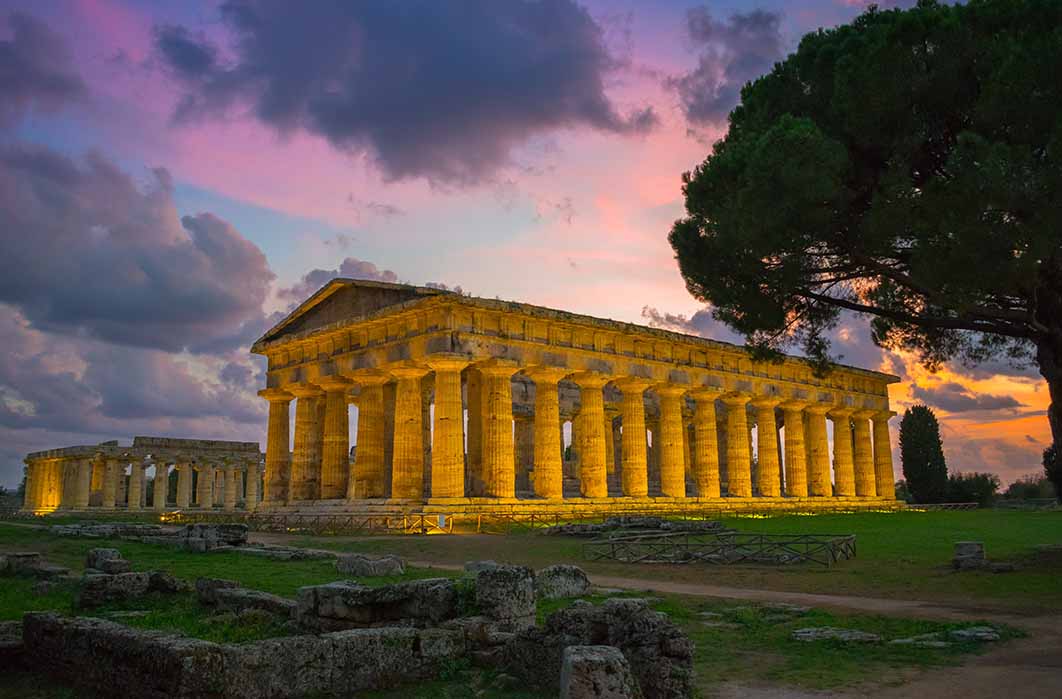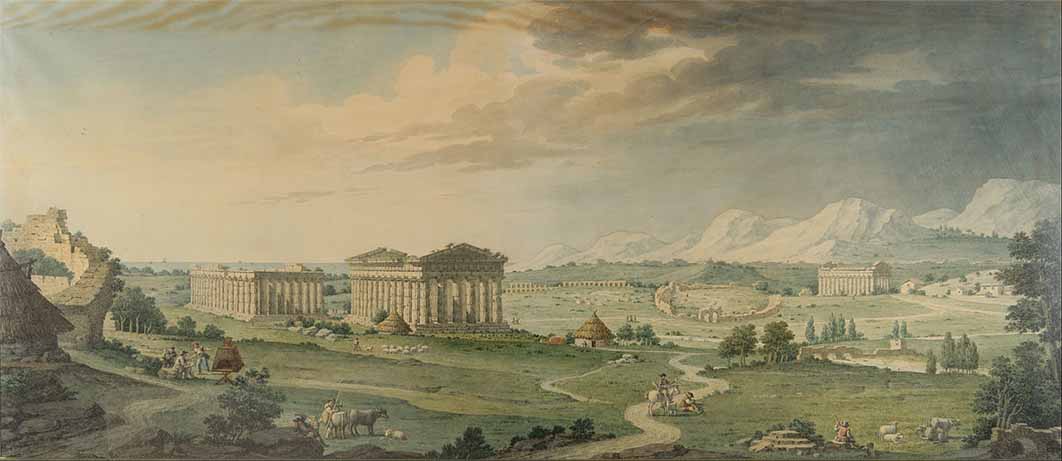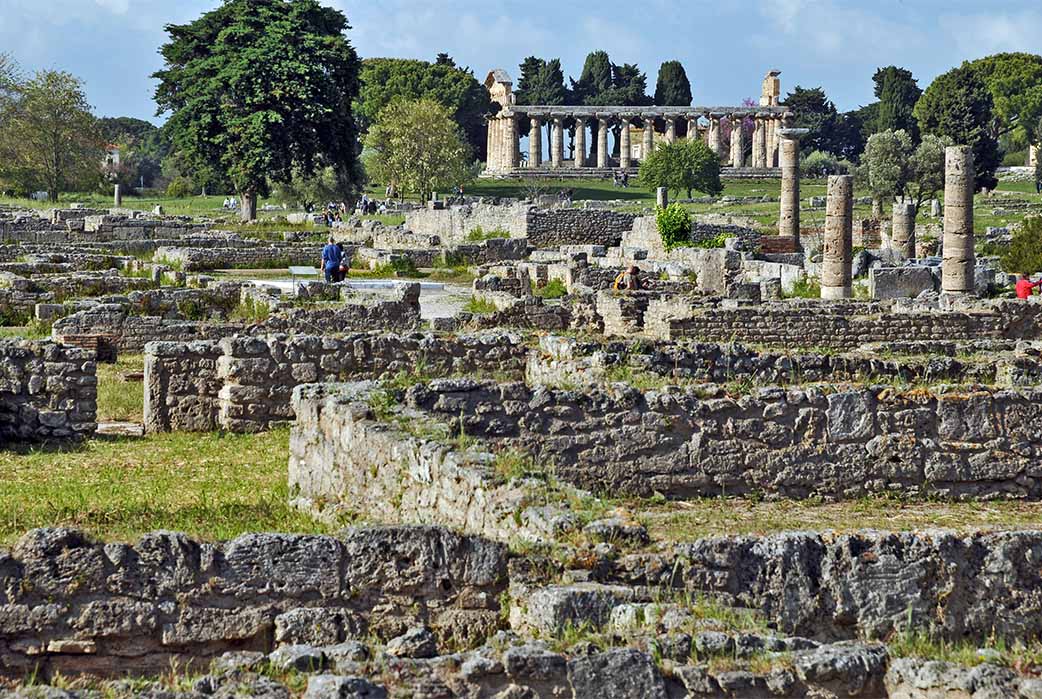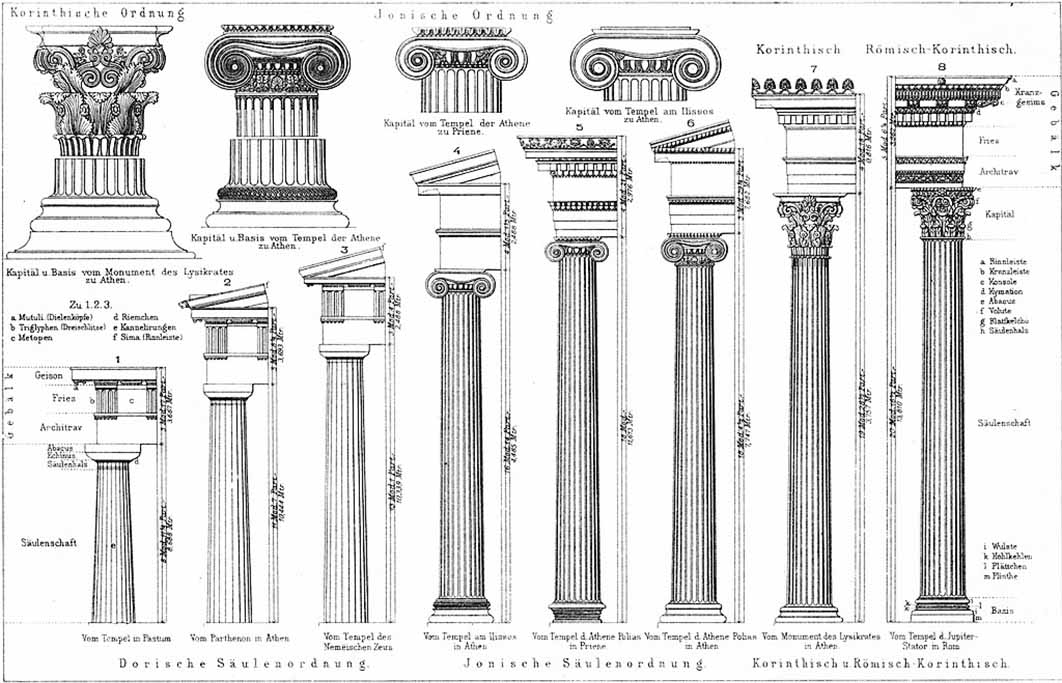
Greek Goddesses’ Temples Grace Paestum On The Italian Tyrrhenian Sea
The ancient Greek city of Poseidonia, now Paestum, lies on the Italian coast of the Tyrrhenian Sea. Paestum, a UNESCO World Heritage Site, is famed for its well-preserved ruins. In fact, posterity owes a debt of gratitude to its swampy marshlands for helping preserve some of the earliest examples of Doric architecture in the Greek world. It was due to the wetlands that malaria would emerge making the area inhospitable to human life, thus all but abandoned for roughly 1,000 years, from the fall of the ancient world in the fourth century AD through the Middle Ages. During a time when Greek temples were systematically dismantled and quarried for their stone, the Doric temples of Paestum were largely forgotten and left alone.

View of the magnificent ruins of the ancient city of Paestum, showing part of the wall and the three temples by Isidro González Velázquez (1837) (Public Domain)
Paestum was originally called Poseidonia, in honor of Poseidon, the god of the sea, and founded in 600 BC by settlers from Sybaris, a prosperous Greek colony on the Ionian side of Calabria in southern Italy. The Sybarites themselves hailed from Achaea and Troezen— two northernmost cities in the Peloponnese region. But long before Poseidonia was a gleam in the eye of the colonizing Sybarites the area was inhabited by an indigenous population who, according to the Greek geographer, Strabo, took refuge further inland once the intrepid Greeks took center stage. Yet the candle was brief. The displaced indigenous Italic tribes, who referred to themselves as Lucanians, reconquered their former land in 400 BC and ruled until it became a Roman colony in 273 BC, at which time the name changed to Paestum, a Latin adulteration of Poseidonia.

Ruins of Paestum, with the temple in the background ( lamio / Adobe Stock)
Beginning with its roots deeply buried in Palaeolithic soil, Paestum has endured multiple incarnations throughout its long and involved history, but what helped put the Greek colony on the map is its three Doric-order temples. Built over a brief time span of 200 years, 600 – 400 BC, when Paestum was still the Greek colony known as Poseidonia, with Hera as its patron goddess, the temples are some of the oldest Doric examples in the Greek world. Some of the best-preserved Greek temples of the Archaic Age (800-480 BC) are found outside Greece. Never known for its arable land, the Greek world was experiencing a farmland shortage that was becoming increasingly pronounced during the population explosion of the Archaic Age. Due to their scarcity of land, colonizing alternative areas became essential for the enterprising Greeks. One such area was southern Italy (including Sicily), a region that would be referred to by the Romans as Magna Graecia or “Greater Greece” because of the Greeks’ substantial expansion there. In addition to the rich fertility of Magna Graecia’s soil, the Greeks had a desire for the area’s raw materials and sought new trading opportunities. These needs together with its proximity to the Greek world made Magna Graecia an ideal candidate for colonization.
Doric Temples outside Greece
From the sixth to the fifth centuries BC—a time of enormous wealth for the colonies—the Greeks built a large number of Doric-order temples throughout Magna Graecia. Doric architecture represents a critical turning point when ancient Greek architects made the transition of replacing impermanent materials such as wood and mud-brick with permanent ones such as stone. The Greeks had learned the essential elements of rock carving from their neighbors, the Egyptians. Making its debut in mainland Greece in the seventh century BC with the Temple of Apollo (680 BC), Doric is the oldest of the three orders of Greek architecture which also include Ionian and Corinthian.

Illustration of three Dorian, three Ionian and two Corinthian columns. Bibliographisches Institut, Leipzig und Wien 1892. (Public Domain)




